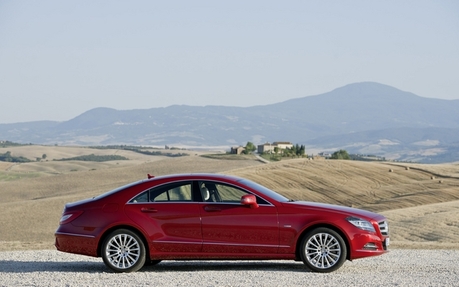2011 Mercedes-Benz CLS in 10 questions
The CLS made its debut in 2003 and was an instant hit. People loved its uniquely elegant silhouette. Mercedes-Benz dared to try something new with a four-door coupe, with this audacity came tremendous success. The manufacturer has since sold 170,000 units, which is nothing to scoff at for a car in this category and price range.
Despite the vehicle’s success and undeniable elegance, the time came to unveil a new generation. And the Paris Auto Show was the place to do it, given the event’s popularity (1.4 million visitors). But the challenge Mercedes-Benz faced was, how to update the vehicle’s looks without losing its unique character? Find out what we think about it by reading the following 10 questions and answers.
- What engines and transmissions are available?
Four engines are available on different markets. There are two turbodiesel engines, one 3.5-L V6 that produces 265 hp and a 2.5-L four-cylinder engine that delivers 204 hp. There is also a 3.6 gas-powered engine that generates 306 hp. Finally, the fourth option is a 5.5-L V8 that pumps out 408 hp and equips the CLS550. All of these engines are coupled with an automatic seven-speed transmission. Initially, only the V8 will be available on the regular version and it will be possible to pair it with 4Matic AWD. This model will be preceded by the CLS AMG.
- Is it elegant?
Hats off to the stylists for their excellent work. They successfully updated this cult car, while preserving its unique style and personality. A more aggressive front end, LED highway lights, more stylized tail lights, and sculpted sides give this vehicle a younger, sportier appearance. The secret to its elegance, the tapering rear section, has been maintained. And, with a drag coefficient of 0.26, this vehicle is also very efficient.
- Can it rival the competition on the road?
The engineers infused the CLS with key genetics by including the E-Class platform (the new generation, of course). This means they kept the multi-link rear suspension. It’s anchored to the chassis with an independent cradle for added rigidity and to temper noise and vibrations. Like other Mercedes-Benz vehicles using this platform, it’s really hard to find anything to complain about. Not to be condescending we could say that the steering could offer better feedback.
- What are its best technical features?
The most innovative element is definitely the speed-sensitive (parametric) steering, which enhances precision. Then there’s the lane departure system. On other Mercedes-Benzes will this system, the steering wheel vibrates to alert the driver when the vehicle crosses the lane line. But on the CLS, the technology has gone a step further and the system automatically returns the car to its lane. It goes without saying that this system is deactivated when you switch on the turn signal. Also worth mentioning are the high-performance LED lights. These optional features are paired with the bi-xenon headlamps for outstanding night vision. Then there’s the fact that the doors, the hood, the front fenders, the trunk lid, most of the suspension components, the engine blocks and the cylinder heads are all aluminum. The aluminum doors are frameless, which is a first for Mercedes-Benz on a personal-use car. Finally, all models come with the Stop/Start Eco system, which cuts the engine when you come to a stop and starts it again when you step on the accelerator.
- Does it offer good value for money?
Even though this car costs more than $70,000, it still offers excellent value when you consider how advanced it is technically, aesthetically, and in terms of performance. What’s more, its fuel consumption has dropped dramatically – up to 25% on some models. In our market, it’s more like 15%.
- Is it better than its predecessor?
Without a doubt! The new CLS is more elegant, more comfortable and more spacious. Plus, it offers better performances and fuel economy.
- What about the controls and dashboard?
The dashboard is similar to the one on the E-Class. It’s the evolution of a previous model. However, the navigation system is much more modern and effective. Mercedes-Benz is very proud of the indicator dials, which are more modern and offer increased functionality, but the fact remains that they are hard to read in bright daylight. And if you ever figure out how to turn off the radio without shutting off the sound system altogether, please let me know.
- How would you describe the front and back seats?
The back seats are a little more spacious than before, but you still need to bend over quite a bit to get into them. Not to mention that headroom is pretty limited too. In contrast, the front seats are very comfortable, with good lateral and leg support. If you order a version with active multicontour seats, you get mechanical and mobile support in turns. The intensity of this active support can be adjusted to your driving style.
- What are the vehicle’s weaknesses?
The back seats, the not-so-intuitive controls, the steering (which is efficient and precise, but offers average feedback), hard-to-gauge brakes, and no diesel version for our market.
- When will it arrive in Canada?
According to the information we have received, the CLS AMG 6.3 will be the first to roll onto Canadian soil. It’s expected during the third quarter of 2011, as a 2012 model. It will be followed by the CLS 550 in the fourth quarter.
Conclusion:
Once again, Mercedes-Benz has found a way of offering us an updated and improved version that keeps the best features from the previous version. It’s just as elegant, but more modern. There’s no doubt that this new vintage will be extremely successful.
